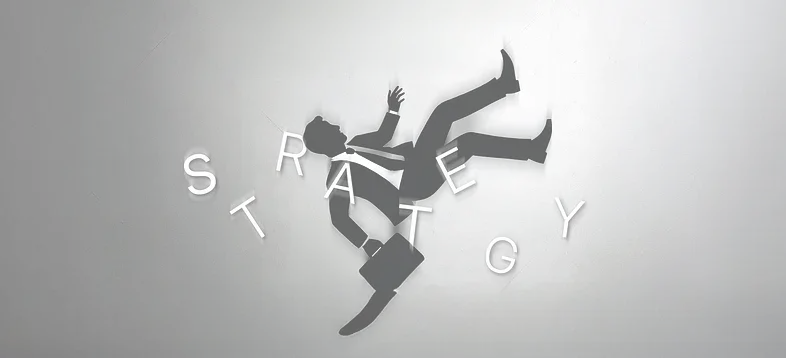The Strategy Reality Gap
Think of your great strategy as a perfectly made race car. The engineering is flawless, the design cutting-edge—but the wheels fall off while it's racing. This is the reality most executives face: brilliant plans that disintegrate during execution.
I'm not interested in buzzwords or theoretical frameworks that look great on slides but fall apart in reality. My insights come from personally leading twelve major strategy rollouts in a fiercely competitive environment. Eleven succeeded immediately. The twelfth initially stumbled but eventually broke records for nineteen straight months once we fixed the execution issues.
Strategy isn't about theory. It's about action. And action requires more than direction—it demands a complete system for execution.
"A strategy without implementation is just a business fantasy."
Why Strategies Usually Fail
1. Confusing Vision with Action
Leaders often mistake clear vision for forward momentum. A good vision is just the starting point, not the whole solution. If your team can't easily recall strategic priorities without checking slides, you don't really have a strategy—you just have talking points.
2. Isolation in the Boardroom
Strategies created in isolation and pushed down like PR campaigns create resistance and fail to deliver. Effective strategies include input from the ground level before launch. My method always involves checking alignment with the people who will execute the strategy before it goes live.
3. Mismatched Timelines
Effective leaders align three crucial timelines: immediate (6 weeks), mid-range (6 months), and long-term (24 months). Most organizations plan well for only one of these, creating blind spots that destroy momentum.
Misaligned timelines cause teams to constantly shift priorities without understanding how today's work connects to future goals. This creates the momentum death cycle—where initiatives start strong but invariably fade when the next quarterly priority arrives.
Real-Life Example: Fortune 50 Transformation
When I redesigned a quota system at a Fortune 50 telecom giant, the challenge wasn't just about creating a better model—it was about making sure timing, territory alignment, trust, and team behaviors worked together.
Initially, resistance was strong. Territory managers saw it as threatening. Sales leaders worried about short-term disruption. Finance questioned sustainability.
The solution involved addressing the whole system, not just individual metrics:
- Transparent modeling so teams could test scenarios before rollout
- Clearly connecting daily tasks with quarterly results
- Cross-functional accountability for territory success
- Gradual rollout with clear early successes
This created a robust system that scaled nationally and lasted more than six years in a culture known for quickly abandoning initiatives. The secret was building action, not just giving direction.
The Real Solution: Creating Action, Not Just Plans
True strategic success comes from creating coordinated organizational movement across three key areas:
1. Translation Mechanisms
Your strategy needs built-in translators—not just between layers of management but between functional silos. When Marketing speaks Marketing and Sales speaks Sales, the strategy fragments at the boundaries. Go beyond communication—build genuine ownership at every level.
2. Timing Synchronization
High-performing strategies have what I call "timing integrity"—where short, medium and long-term action cycles reinforce rather than compete with each other. Clearly connect immediate tasks to medium and long-term outcomes.
3. System Over Story
When strategy is only a narrative, it's vulnerable to competing stories. When it's a system with feedback loops, measurement touchpoints, and adaptive protocols—it becomes self-sustaining. Most process breakdowns happen at transition points; effective execution requires identifying and optimizing these transitions.
Practical Steps to Get Moving
Every successful strategy needs these foundational elements:
- Map the playing field: Know every player and factor your strategy touches
- Keep score visibly: Track progress openly across short, mid, and long term goals
- Start with quick wins: Roll it out in phases and showcase early victories
- Listen and adjust: Regularly refine your plan based on direct team feedback
- Own critical handoffs: Clarify who's responsible at each transition
Implementation Insight
The most reliable predictor of strategic success isn't the quality of your plan—it's the clarity of your implementation system. A few deeper insights stay in my back pocket—they're the difference makers I share with my coaching clients.
Final Thoughts
A strategy without execution is just wishful thinking. True strategic leadership means building systems that translate vision into coordinated action, where everyone clearly sees their role in achieving success.
Winning organizations aren't always the ones with the smartest ideas—they're those who've mastered turning strategy into reality.
It's time to stop treating strategy as just an intellectual exercise. Start engineering it as a fully integrated system of action.




